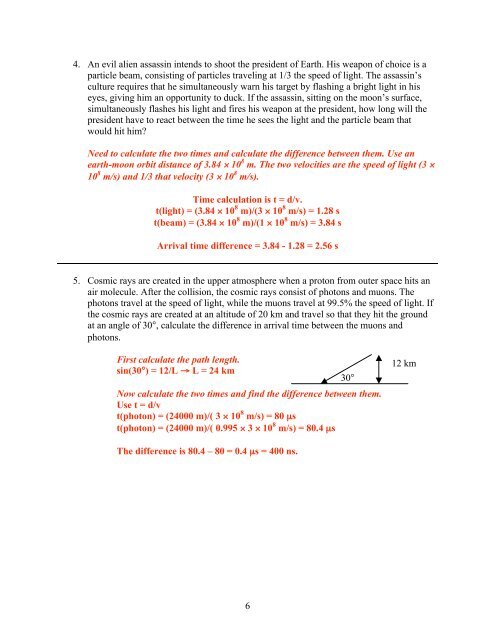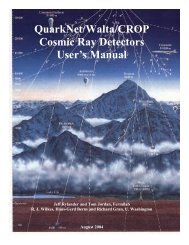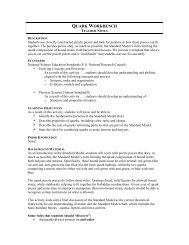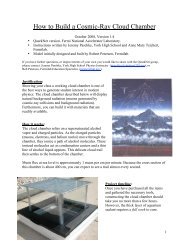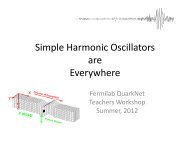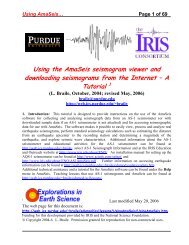Teaching Modern Physics - QuarkNet - Fermilab
Teaching Modern Physics - QuarkNet - Fermilab
Teaching Modern Physics - QuarkNet - Fermilab
You also want an ePaper? Increase the reach of your titles
YUMPU automatically turns print PDFs into web optimized ePapers that Google loves.
4. An evil alien assassin intends to shoot the president of Earth. His weapon of choice is a<br />
particle beam, consisting of particles traveling at 1/3 the speed of light. The assassin’s<br />
culture requires that he simultaneously warn his target by flashing a bright light in his<br />
eyes, giving him an opportunity to duck. If the assassin, sitting on the moon’s surface,<br />
simultaneously flashes his light and fires his weapon at the president, how long will the<br />
president have to react between the time he sees the light and the particle beam that<br />
would hit him?<br />
Need to calculate the two times and calculate the difference between them. Use an<br />
earth-moon orbit distance of 3.84 × 10 8 m. The two velocities are the speed of light (3 ×<br />
10 8 m/s) and 1/3 that velocity (3 × 10 8 m/s).<br />
Time calculation is t = d/v.<br />
t(light) = (3.84 × 10 8 m)/(3 × 10 8 m/s) = 1.28 s<br />
t(beam) = (3.84 × 10 8 m)/(1 × 10 8 m/s) = 3.84 s<br />
Arrival time difference = 3.84 - 1.28 = 2.56 s<br />
5. Cosmic rays are created in the upper atmosphere when a proton from outer space hits an<br />
air molecule. After the collision, the cosmic rays consist of photons and muons. The<br />
photons travel at the speed of light, while the muons travel at 99.5% the speed of light. If<br />
the cosmic rays are created at an altitude of 20 km and travel so that they hit the ground<br />
at an angle of 30°, calculate the difference in arrival time between the muons and<br />
photons.<br />
First calculate the path length.<br />
sin(30°) = 12/L → L = 24 km<br />
Now calculate the two times and find the difference between them.<br />
Use t = d/v<br />
t(photon) = (24000 m)/( 3 × 10 8 m/s) = 80 µs<br />
t(photon) = (24000 m)/( 0.995 × 3 × 10 8 m/s) = 80.4 µs<br />
The difference is 80.4 – 80 = 0.4 µs = 400 ns.<br />
6<br />
30°<br />
12 km


